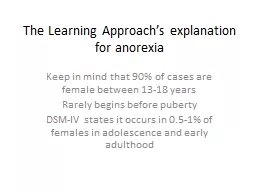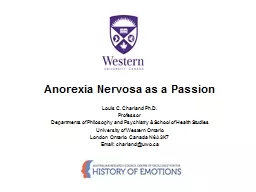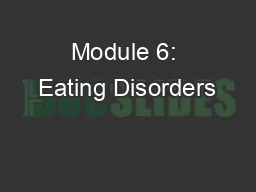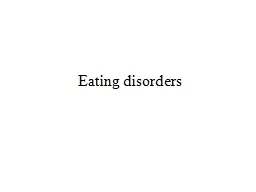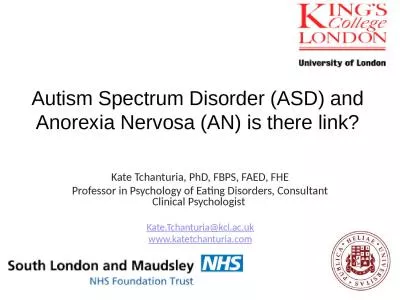PPT-The Learning Approach’s explanation for anorexia
Author : pasty-toler | Published Date : 2019-11-23
The Learning Approachs explanation for anorexia Keep in mind that 90 of cases are female between 1318 years Rarely begins before puberty DSMIV states it occurs
Presentation Embed Code
Download Presentation
Download Presentation The PPT/PDF document "The Learning Approach’s explanation fo..." is the property of its rightful owner. Permission is granted to download and print the materials on this website for personal, non-commercial use only, and to display it on your personal computer provided you do not modify the materials and that you retain all copyright notices contained in the materials. By downloading content from our website, you accept the terms of this agreement.
The Learning Approach’s explanation for anorexia: Transcript
Download Rules Of Document
"The Learning Approach’s explanation for anorexia"The content belongs to its owner. You may download and print it for personal use, without modification, and keep all copyright notices. By downloading, you agree to these terms.
Related Documents

